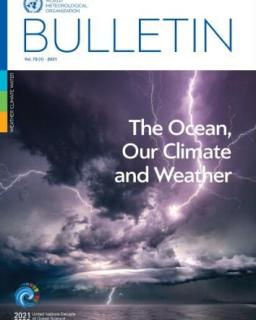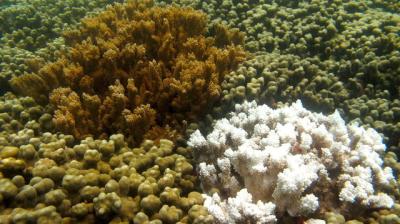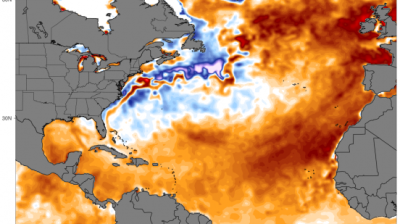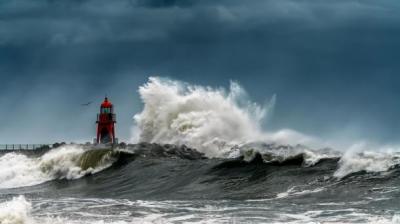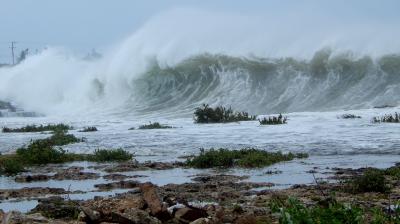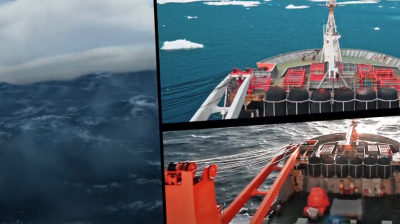
Ocean
Covering around 71% of the Earth’s surface, the ocean contains about 97% of the planet’s water. The ocean provides a source of food, serves as a transport medium for roughly 90% of global trade, and plays a crucial role in the Earth’s weather and climate system.
Overview
Understanding the ocean and its interaction with the Earth’s atmosphere is vital to weather forecasting and climate prediction.
Weather forecasting originated in the mid-1800s, from the need to make shipping safer and more cost-effective by helping ships navigate adverse weather conditions and make informed decisions about their routes and schedules.
While gaps remain, technological advances have revolutionized our ability to systematically monitor sea surface winds, waves, and sea level height as well as ocean temperatures, currents, and salinity – all critical to better understanding the ocean and its role in influencing weather, water and climate events. We can now measure the physical properties of the ocean on an hourly/daily basis, which allows for better and longer-term predictions. For instance, wave-recording buoys provide near real-time information about the height and direction of waves. By measuring ocean temperatures at the sea surface and various depths, we can define the onset of El Niño and La Niña cycles, which are key to seasonal forecasting in much of the world. Weather forecasts beyond 7 days everywhere, over land or at sea, depend on ocean data and models.
As the ocean continues to warm and sea levels rise further, the need for activities in ocean research, observations and data exchange, forecasting, and operational services will continue to grow, to better understand and predict changes in our Earth system.
Impact
Approximately 40% of the world’s population lives within 100km of the coast, relying on the ocean for their livelihoods. Weather forecasts and climate services help communities, businesses, and industries better prepare for and mitigate the impacts of extreme weather events, such as storms, floods, and heatwaves.
National meteorological marine services provide vital information about sea and coastal weather conditions. These include accurate predictions of storms, the winds and waves they generate and sea ice coverage and thickness, which are essential to making informed decisions related to maritime activities. Warnings and forecasting services help ensure the safety of ships, their crew and cargo, the operation and safety of workers on offshore maritime industries and the environment. Early warning systems and impact-based forecasting services can minimize the risk and impact of disasters from coastal weather and climate events; these are increasingly important for supporting coastal management and resilience, particularly in vulnerable coastal areas and small island developing states (SIDS).
Changes in the ocean serve as key indicators of the state of the climate and climate change. The ocean stores much of the heat trapped by greenhouse gases and plays a major role in how our climate is changing. It absorbs some of the carbon dioxide emitted by human activities, causing sea water to become less alkaline; this, along with increasing marine heat waves, is damaging coral reefs and their fisheries, upon which some one billion people rely. Rising sea levels worsen the impact of storms and coastal inundation, particularly in SIDS and along vulnerable coastlines, and can endanger freshwater supplies. By comprehending these intricate relationships and interactions, we can protect habitats, manage climate change impacts, and make informed decisions for sustainable resource management.
Better projections of how storm patterns will change, sea ice will melt, and regional sea levels will rise are vital for coastal zone management and enhancing safety of life and property at sea.
WMO's response
WMO supports its Members by coordinating worldwide efforts to produce accurate and timely weather, water, and climate early warnings and forecasts. Doing so requires coordinated efforts across the Earth system, including the ocean, along the value chain of observations, data management, forecasting systems and operational services for maritime activities. These flow from a common infrastructure through scientific research, assessments, capacity development, and policy influence. This work is particularly crucial in areas prone to impacts from ocean storms and inundation, such as SIDS, vulnerable coastlines, polar regions, and shipping routes.
WMO also works closely with partners and stakeholders to advance these efforts.



